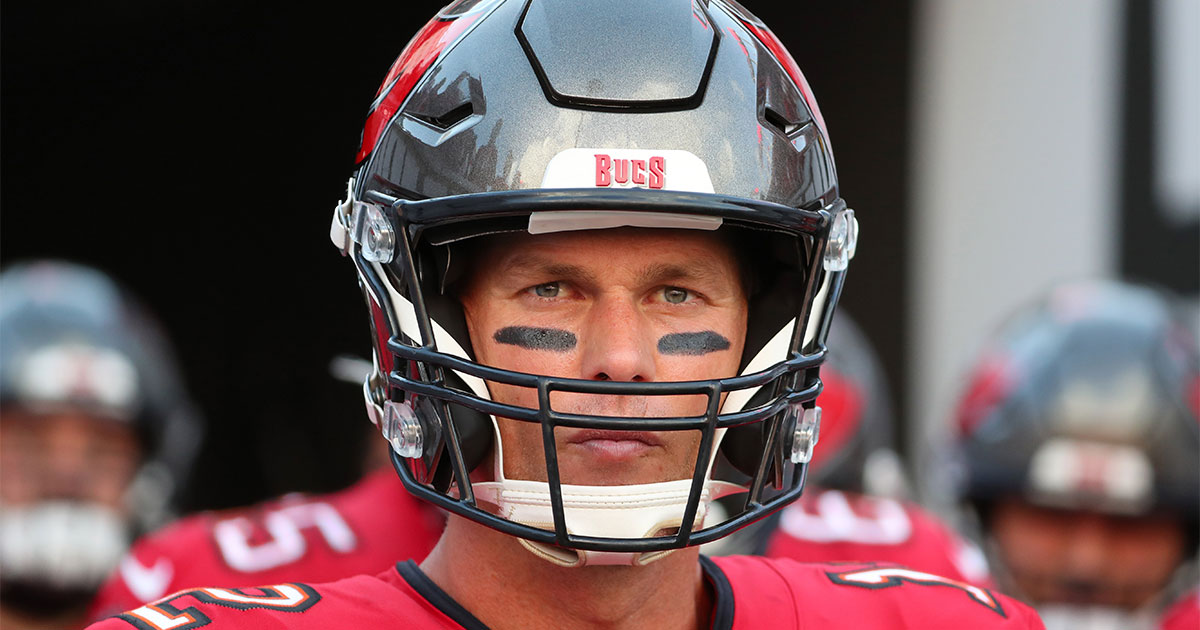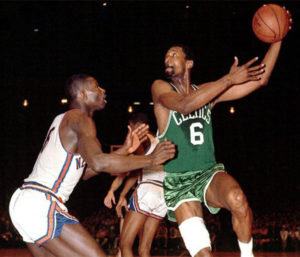Who Is the GOAT? A Babson Professor Researches Greatness

Who is the greatest of all time?
In the world of sports, this is the stuff that fuels barroom discussions and arguments on radio talk shows.
Fans argue about not only who is the greatest in their individual sports (LeBron James vs. Michael Jordan, Tiger Woods vs. Jack Nicklaus) but also the greatest athlete to ever lace them up across all athletic endeavors. One of the greats at the heart of the debate, NFL quarterback Tom Brady, retired last week after 22 seasons and seven Super Bowl championships.
Of course, arguing over a beer about the greatest of all time, or GOAT as it’s commonly referred to, is one thing. It’s quite another to bring academic rigor to answering the question, to consider all the nuances and complexities of the issue.
That’s exactly what Rick Cleary, a professor of mathematics at Babson College, is setting out to do.
A Complex Question
Cleary has long been interested in sports statistics, ever since poring over standings and box scores as a kid reading The Sporting News. A teacher of a course called Sports Applications of Mathematics, he has brought sports into the classroom and his research in various ways, whether by inventing a new type of NCAA pool for March Madness or investigating the role of chance in athletic contests.

Rick Cleary, professor of mathematics at Babson College
In terms of GOATS, he and a colleague (Steven Miller at Williams College) are finishing up a paper on the topic, with more potentially to follow. “We want to demonstrate how complex the question is,” Cleary says.
The question is so complex, in fact, that they found themselves, like any passionate sports fan, talking endlessly about it. “I could talk about this all day. It’s hard to stop,” admits Cleary, the Robert E. Weissman ’64, H’94, P’87 ’90 and Janet Weissman P’87 ’90 Professor of Business Analytics. “We have gone in many directions. It’s hard to tell when to finally stop writing and hit submit on the paper.”
Cleary spoke about his work with GOATs at the latest Babson Faculty Research Day, an annual showcase of the wide range of scholarship happening at the College. At this year’s event, with more than 80 participants, Babson professors discussed their research on everything from sustainability and cybersecurity to theater and history.
Evaluating Greatness
When looking at the question of GOATS, the first thing Cleary and Miller had to do was figure out where to begin. How does one, for starters, discuss the impact of players on team sports (basketball, baseball) vs. athletes in individual sports (swimming, tennis)? Or, when looking at disparate individual sports, compare the brilliance of, say, tennis player Serena Williams with that of golfer Woods?
Finding adequate statistics was a major consideration. Stats for the major North American sports leagues such as Major League Baseball are extensive and readily available, and that’s a big reason Cleary and Miller ultimately decided to focus on players in team sports, at least for their first paper. “You start with a big problem, and you realize you have to whittle it down,” Cleary says.
“In a team sport, if you have a star who leads you to titles, that is the best of all teammates.”
Rick Cleary, the Robert E. Weissman ’64, H’94, P’87 ’90 and Janet Weissman P’87 ’90 Professor of Business Analytics
Whittling the discussion down even further for their first foray into GOATs, they eventually decided to focus on just a single pair of athletes with Boston ties: New England Patriot Brady and Boston Celtic Bill Russell. Both achieved unparalleled success with their respective teams: Russell won 11 NBA championships in his 13 seasons, Brady won seven Super Bowl titles in 22 seasons (the last title with the Tampa Bay Buccaneers.).
The ability to lead a team to the championship, the researchers believe, is the ultimate marker of one’s greatness. In this way, Brady vs. Russell isn’t just a battle of GOATs but a contest of an acronym the researchers coined themselves: BOATs (best of all teammates). “In a team sport,” Cleary says, “if you have a star who leads you to titles, that is the best of all teammates.”
Factors to Consider
At first, when looking at the playoff success of Brady and Russell, the Celtics star appears to have the clear advantage, winning more titles in a shorter amount of time. But, Cleary says, there are three factors to consider when comparing their achievements.

In his research, Rick Cleary compares the accomplishments of quarterback Tom Brady with those of Boston Celtics legend Bill Russell (above), who won 11 titles in his 13 seasons. Credit: Kip-koech
To begin with, when Russell began playing in the NBA during the 1950s, the league had just eight teams, and it would expand to 14 by the time he was done playing in the late 1960s. By comparison, Brady’s NFL had 32 teams for nearly his entire career. “It’s harder to win championships with more teams,” Cleary says.
Another factor to consider is that Russell played in an era before free agency, so his team’s lineups were relatively stable. Brady, by contrast, played on teams with constantly changing rosters, which makes competing for titles more challenging.
Finally, the NFL’s playoff structure (teams play a single game against an opponent to determine who advances) compared to the NBA’s format (teams play in a series of games) allows for a greater chance of upsets to happen. That’s an extra difficulty faced by Brady and the typically strong teams led by him.
In the end, all three of these factors—smaller league, longer playoff series, more roster stability—favored Russell, though at this time Cleary isn’t quite ready to give an ultimate answer to who is the GOAT between Russell or Brady. He still has plenty of other directions to pursue in GOAT research, say by zeroing in further on how individual performance contributes to team success or looking at the impact of exceptional female athletes, who are so often overlooked.
Analytical questions involving sports may not always have world-changing ramifications, but Cleary hopes students and researchers find the GOATs discussion interesting and thought-provoking. “I think this is a nice problem to explain the nuances of probability modeling,” he says.
Posted in Insights





